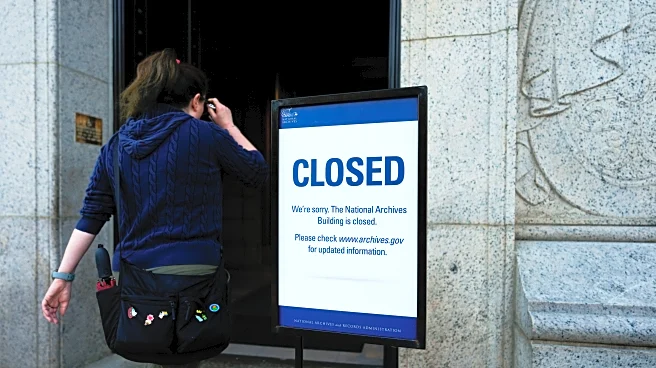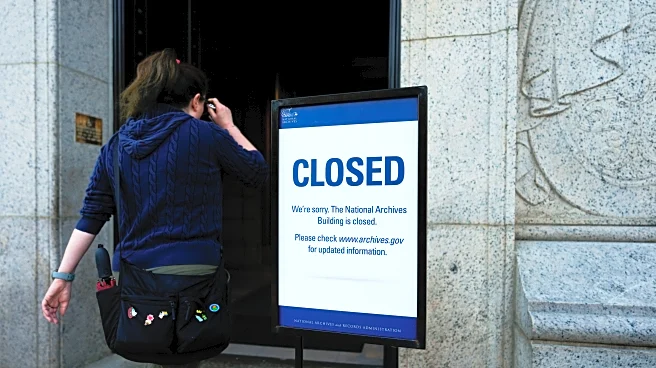What's Happening?
The U.S. government shutdown is set to continue into next week after the Senate failed for the fourth time to pass a bill to fund agencies through November 21. The rejection of the continuing resolution leaves hundreds of thousands of federal employees furloughed and others at risk of layoffs. The Senate's inability to secure the necessary 60 votes reflects deep divisions between Democrats and Republicans, with no immediate resolution in sight. The Trump administration has already furloughed approximately 550,000 employees, and this number is expected to rise if the shutdown persists.
Why It's Important?
The prolonged shutdown poses significant challenges for federal employees and government operations. Agencies like the IRS are operating on limited funds, which are expected to deplete soon, potentially leading to more furloughs. The White House has indicated that mass layoffs may be necessary, further exacerbating the situation for federal workers. The shutdown also impacts public services and could have broader economic implications if it continues. The political stalemate highlights the difficulties in reaching bipartisan agreements on budgetary issues, affecting public confidence in government functionality.
What's Next?
As the shutdown continues, federal employees face uncertainty regarding their employment and pay. The next potential pay date for many workers is mid-October, which could see delayed or reduced paychecks if the shutdown is not resolved. Political leaders remain at an impasse, with Democrats demanding action on healthcare premiums as part of any deal to reopen the government. The situation requires urgent negotiation to prevent further disruption to government services and employee livelihoods.











